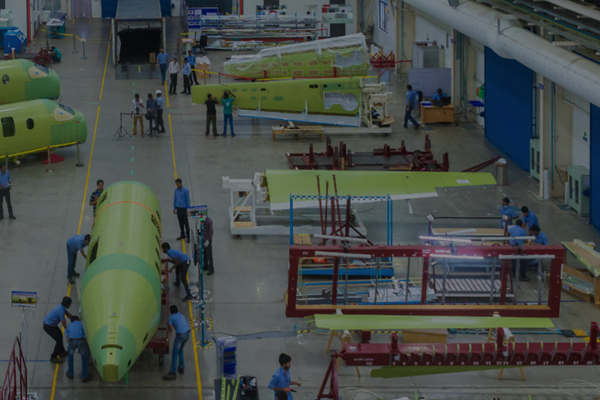.png)

Krishnadevan is Consulting Editor at BasisPoint Insight. He has worked in the equity markets, and been a journalist at ET, AFX News, Reuters TV and Cogencis.
June 27, 2025 at 5:11 AM IST
Stocks like Mazagon Dock, Bharat Electronics, and Bharat Forge have surged in recent years, riding a wave of bullish sentiment powered by rising defence exports, policy reform, and closer strategic ties with Washington. The sector, long dismissed as a sleepy backwater of government contracts and delays at the Defence Research and Development Organisation, is now being re-rated by investors who see it as India’s next sunrise story.
At the centre of investor excitement is a proposed Reciprocal Defence Procurement Agreement between India and the United States. If signed, it would grant Indian companies ‘national’ status in US defence contracts, bypassing the restrictive ‘Buy American’ rules that have historically locked them out of the Pentagon’s $900 billion annual budget. For Indian companies, that’s a master key if they develop the wherewithal to turn the lock.
The RDP is part of a set of alongside developments. Alongside it are the Security of Supply Arrangement, the Initiative on Critical and Emerging Technologies, and a lesser-known initiative called TRUST, or Transforming the Relationship Utilizing Strategic Technologies. SOSA was signed in August 2024 and will ensure priority access to critical defence supplies for both nations, embedding Indian firms into US supply chains and vice versa. ICET aims to accelerate collaboration in next-generation fields such as artificial intelligence, quantum computing, and semiconductors4.
These agreements form part of what officials describe as a broader strategic roadmap. While no formal defence framework is in place, US and Indian leaders have committed to deepening cooperation under these multiple tracks.
Also, they coincide with a domestic policy push. The Ministry of Defence has declared 2025 as the “Year of Reforms”, aiming to transform India’s armed forces into a tech-savvy, multi-domain powerhouse. At a recent Confederation of Industry event, the Indian Air Force Chief underlined the urgency of private-sector partnerships, noting that achieving combat readiness will require more than Defence Research and Development Organisation muscle.
India’s private sector stands to gain disproportionately if India and US were to arrive at an understanding and if matched by policy reforms in India and all stakeholders loosen up diffidence over technology secrecy. Unlike public sector companies, the private sector is more agile, innovation-driven, and better positioned to forge global partnerships and absorb advanced technologies.
The shift towards competitive bidding and co-development under the RDPA and ICET opens up export markets and supply chain integration opportunities that were previously out of reach. This could accelerate the private sector’s transition from low-margin assembly to high-value R&D and manufacturing, PSUs while have historically focused on domestic, government contracts may face stiffer competition and slower adaptation. Of course, things could change in the public sector if the recommendations of the VijayRaghavan panel on restructuring DRDO get going.
Some private sector names have already caught the spotlight. Bharat Forge, with a strong export order book in artillery and chassis systems, is well-positioned to ride the RDP wave. Astra Microwave, known for its radar subsystems, and Data Patterns, which supplies electronic warfare components, are also emerging as credible players in next-gen defence manufacturing. Idea Forge, a drone maker, is already integrating US-developed AI targeting systems into its platforms. Solar Industries, now a top-20 global explosives exporter, and Tonbo Imaging, which sells night-vision gear to over a dozen countries, prove that Indian defence tech can go global if conditions are right.
But conditions come with caveats.
Valuation risk is the most obvious. Mazagon Dock, Hindustan Aeronautics and Bharat Electronics trade at premium multiple. These prices assume flawless execution, continued order flows, and a smooth scale-up into global markets. Yet defence is rarely linear. Project delays, regulatory hurdles, and geopolitics have a way of knocking even the most promising stories off course.
Then there’s the technology gap. While Indian firms have become competent assemblers, they still lag in proprietary technologies. Moving up the value chain will require deep R&D investment, long-term partnerships, and intellectual property development. So far, private investment in defence R&D has been tepid. If that doesn’t change, Indian companies risk staying stuck in the low-margin end of the supply chain.
The ICET and TRUST frameworks could help here, especially if they lead to real tech transfer and co-development. But results will take years, not quarters. And investors don’t always have that kind of patience.
Another catch is that the RDP is a two-way street. US defence giants could get easier access to Indian contracts, particularly those moving to competitive bidding. For domestic suppliers overly reliant on government orders, this could mean squeezed margins and stiffer competition. The winners will be firms that can consistently deliver quality at globally competitive costs.
Still, the upside is real. Every billion dollars in defence exports creates not just revenues, but also high-skill jobs, R&D spillovers, and dual-use technologies that benefit civilian sectors from aviation to cybersecurity. India’s cost advantage, large engineering talent base, and improving regulatory framework give it a good shot at capturing a bigger slice of the global defence pie.
The sector’s fundamentals are shifting and for long-term investors these are tailwinds worth tracking. Assuming a blue sky scenario for stocks in the defence sector at a time when geopolitical contours are in marshland can be dangerous. But then the defence sector is not for the faint hearted either.




